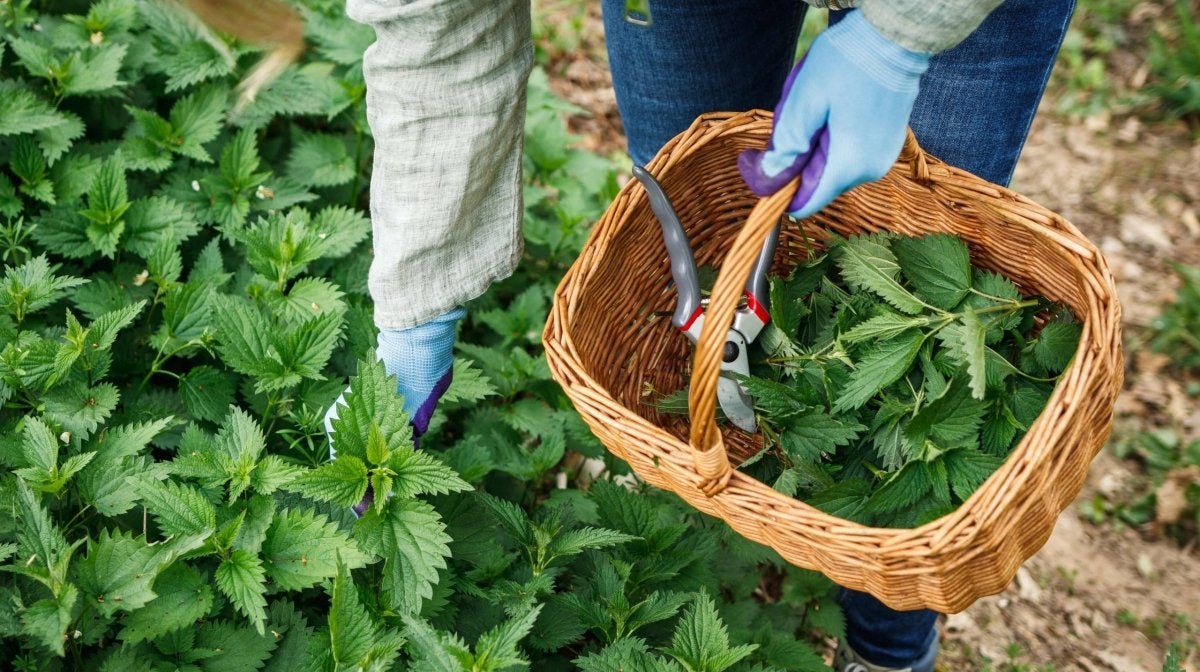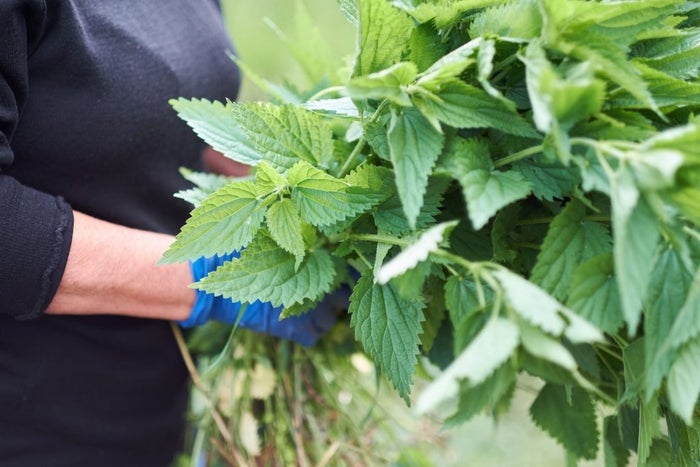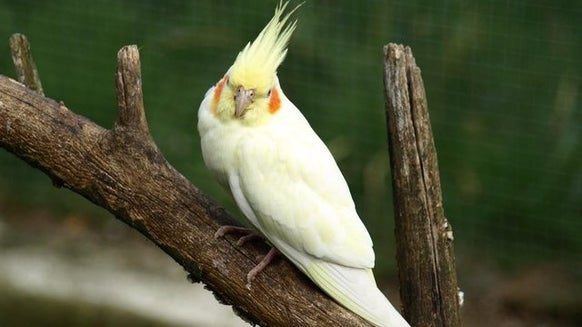Befriending Stinging Nettles: Benefits of this Misunderstood Plant

Nettles 101: Unlocking the Mysteries & Marvels of these fascinating plants
In the botanical world, few plants captivate and confound quite like nettles. With their stinging hairs and tenacious growth habits, nettles have earned a reputation as both friend and foe to gardeners, herbalists, and outdoor enthusiasts alike. Yet, beyond their prickly exterior lies a world of wonder and discovery waiting to be explored. Join us as we embark on a journey through the fascinating realm of nettles, unravelling their secrets and celebrating their remarkable attributes.
Meet the Nettles: Nettles belong to the genus Urtica and encompass a diverse group of herbaceous plants found in temperate regions around the world. Commonly known species include stinging nettle (Urtica dioica), dwarf nettle (Urtica urens), and wood nettle (Laportea canadensis). Despite their intimidating reputation, nettles are renowned for their resilience, adaptability, and unique adaptations. Stinging Sensation: One of the most distinctive features of nettles is their stinging hairs, which contain tiny hollow tubes filled with irritating substances. When brushed against, these hairs break off and inject a cocktail of chemicals into the skin, causing a painful stinging sensation. While initially unpleasant, the sting is typically short-lived and rarely causes serious harm. Culinary Delights: Despite their stinging hairs, nettles have long been prized for their culinary versatility and nutritional value. Young nettle leaves can be harvested and cooked in a variety of dishes, including soups, stews, stir-fries, and teas. Rich in vitamins, minerals, and protein, nettles offer a flavourful and nutritious addition to any meal. Medicinal Marvels: Nettles have a storied history as herbal remedies, revered for their medicinal properties and therapeutic benefits. Nettle tea, tinctures, and extracts are commonly used to alleviate allergy symptoms, support urinary health, and reduce inflammation associated with arthritis and other inflammatory conditions. Nettles are also prized for their diuretic, antihistamine, and astringent properties. Ecological Champions: Beyond their culinary and medicinal uses, nettles play a vital ecological role in supporting biodiversity and ecosystem health. They provide habitat and food sources for a wide range of insects, birds, and small mammals, and serve as host plants for the larvae of several butterfly species. Nettles also contribute to soil fertility through their rapid growth and decomposition. Cultural Significance: Nettles have a rich cultural heritage and feature prominently in folklore, mythology, and traditional customs around the world. In many cultures, nettles are associated with protection, fertility, and prosperity, and are used in rituals and ceremonies to ward off evil spirits and promote good luck.
Embracing the Sting
Stinging nettles, with their serrated leaves and formidable reputation, often evoke discomfort and frustration for gardeners and outdoor enthusiasts alike. However, beneath their prickly exterior lies a treasure trove of benefits waiting to be discovered. Let's explore the pain points associated with stinging nettles and how to overcome them, while also delving into the myriad benefits these resilient plants offer.
Downfalls of the Nettle
Stinging Sensation: The primary pain point associated with stinging nettles is, unsurprisingly, their stinging hairs. Brushing against these hairs can result in a painful, stinging sensation, accompanied by redness, itching, and sometimes even welts or blisters. Invasive Growth: Stinging nettles have a prolific growth habit and can quickly colonize large areas if left unchecked. Their aggressive spreading tendencies can make them a nuisance in gardens, parks, and natural areas, where they may compete with desired plants for space and resources. Unwanted Weed Status: Due to their rapid growth and ability to thrive in a wide range of environments, stinging nettles are often labelled as weeds and treated as such. Their presence can be seen as undesirable and a nuisance, leading to efforts to eradicate or control them using chemical herbicides or mechanical removal methods.
How to Stop Nettle Stings
These are our top tips on how to stop nettle stings:
Protective Gear: When working with stinging nettles, wearing protective clothing such as long sleeves, pants, gloves, and closed-toe shoes can help minimize skin contact and reduce the risk of stings. Thick gardening gloves or leather gloves provide an additional layer of protection against stinging hairs. Gentle Handling: Approach nettle sting with care and avoid brushing against them unnecessarily. When harvesting nettles for culinary or medicinal purposes, use scissors or garden shears to carefully snip off the tops of the plants, taking care to avoid contact with exposed skin. Cooking and Processing: Cooking or drying stinging nettles neutralizes their stinging hairs and renders them safe for consumption or use in herbal remedies. Nettles can be steamed, boiled, sautéed, or brewed into teas to extract their nutritive and medicinal properties while eliminating the risk of stings.
How to Treat Nettle Stings
It's handy to know how to treat nettle stings and how to soothe nettle stings. Follow our steps:
- Wash the affected area with soap and water.
- Apply a cold compress or ice pack to reduce swelling and relieve itching.
- Calm irritation with over-the-counter antihistamines or hydrocortisone cream.
Consider natural remedies like aloe vera or oatmeal paste for soothing relief and that's how you treat stinging nettle.
How Long do Nettle Stings Last
How long do Nettle Stings Last: Nettle stings typically last anywhere from a few hours to a couple of days, depending on the severity of the reaction and individual sensitivity. Most symptoms, such as itching and redness, usually diminish within a day or two with proper treatment. Stinging nettle rash can be highly uncomfortable however we suggest all our steps to soothe nettle sting.
What are the Positives of Nettles
Nutritional Value: Despite their prickly reputation, stinging nettles are incredibly nutritious, packed with vitamins, minerals, and phytonutrients. They are particularly rich in iron, calcium, magnesium, vitamins A and C, and protein, making them a valuable addition to a healthy diet. Medicinal Properties: Stinging nettles have a long history of use in traditional medicine for their anti-inflammatory, antihistamine, and diuretic properties. Nettle tea, tinctures, and extracts are commonly used to alleviate allergy symptoms, support urinary health, and reduce inflammation associated with conditions such as arthritis and gout. Garden Benefits: Despite their invasive tendencies, the stinging nettle plant plays an important ecological role in supporting biodiversity and providing habitat for wildlife. They attract pollinators such as bees and butterflies and serve as host plants for the larvae of certain butterfly species, including the red admiral and comma butterflies.
In conclusion, while stinging nettles may present challenges and discomforts, they also offer valuable benefits that are worthy of appreciation and exploration. By taking precautions to protect against stings and harnessing the nutritive and medicinal properties of these resilient plants, we can transform our relationship with stinging nettles from one of adversity to one of admiration and respect.

Interesting Facts about Nettles in Folklore and Culture
Across centuries and continents, nettles have woven themselves into the fabric of folklore and culture, leaving behind a trail of rich history and symbolism. These humble plants, with their stinging hairs and tenacious growth, have captured the imagination of storytellers, healers, and everyday people alike. Join us as we delve into the captivating world of nettles in folklore and culture, uncovering the tales, traditions, and symbolism that have shaped our perception of these remarkable plants.
Tales of Protection: In many cultures, nettles are associated with protective qualities and warding off evil spirits. In European folklore, hanging a bundle of nettles above the doorway was believed to protect the home from malevolent forces and bring good luck to the inhabitants. Similarly, wearing a necklace of dried nettles was thought to ward off illness and misfortune. Fertility and Prosperity: Nettles have long been associated with fertility, prosperity, and abundance in various cultures around the world. In ancient Greece, brides would carry bouquets of nettles to symbolize fertility and ensure a fruitful union. In Celtic mythology, nettles were seen as a symbol of wealth and prosperity, with the ability to bring good fortune to those who cultivated them. Healing Traditions: Nettles have a rich history as herbal remedies in traditional medicine systems, revered for their medicinal properties and therapeutic benefits. In medieval Europe, nettles were used to treat a variety of ailments, including arthritis, gout, and rheumatism. Nettle tea was prized for its diuretic properties and was believed to cleanse the blood and purify the body. Transformation and Rebirth: Nettles have been associated with themes of transformation and renewal, symbolizing the cycle of life, death, and rebirth. In Norse mythology, nettles were associated with the goddess Frigg, who used them to restore her son Balder to life after he was killed by mistletoe. Similarly, nettles were believed to have the power to revive the dead and bring new life to barren landscapes. Symbolism in Art and Literature: Nettles have inspired artists, poets, and writers throughout history, serving as symbols of resilience, perseverance, and the enduring power of nature. In Shakespeare's play "Henry IV, Part 1," nettles are referenced as a metaphor for the hardships of life, with the character Hotspur declaring, "Out of this nettle, danger, we pluck this flower, safety." Cultural Practices: Nettles have played a role in cultural practices and rituals around the world, from fertility rites and seasonal celebrations to protective charms and divination rituals. In some cultures, nettle baths or steam treatments were believed to cleanse the body and rejuvenate the spirit, while in others, nettles were used in love spells and fortune-telling rituals.
In conclusion, nettles occupy a fascinating place in folklore and culture, embodying a rich tapestry of history, symbolism, and tradition. From tales of protection and fertility to healing traditions and artistic inspiration, nettles have left an indelible mark on human consciousness, reminding us of the profound connections between nature, myth, and the human experience. So the next time you encounter nettles in the wild or in your garden, take a moment to appreciate the hidden depths of history and symbolism that lie within these remarkable plants.
From Garden Nuisance to Kitchen Delight
In the realm of gardening, few plants are as notorious as nettles. With their stinging hairs and relentless growth, nettles often find themselves labelled as pesky weeds, unwelcome intruders in gardens and landscapes. Yet, beneath their prickly exterior lies a culinary treasure waiting to be discovered. Join us as we explore the journey of nettles from garden nuisance to kitchen delight, unlocking the culinary magic that transforms these humble plants into culinary stars.
The Nettle's Sting: At first glance, nettles may seem like adversaries, with their stinging hairs capable of delivering a painful jab to unsuspecting hands and legs. Gardeners often approach nettles with caution, wary of their invasive tendencies and potential for irritation. However, beneath the sting lies a wealth of culinary potential waiting to be unleashed. Culinary Versatility: Despite their prickly reputation, nettles are celebrated for their culinary versatility and nutritional value. Once harvested and properly prepared, nettles reveal tender, flavourful leaves that can be used in a variety of dishes. From soups and stews to pastas and pies, nettles lend a unique depth of flavour and vibrant green hue to any recipe. Nutritional Powerhouse: Nettles are not only delicious but also packed with essential nutrients, making them a valuable addition to any diet. Rich in vitamins A, C, and K, as well as minerals like iron, calcium, and magnesium, nettles offer a potent dose of nutrition with every bite. They are particularly prized for their iron content, making them a valuable dietary source for vegetarians and vegans. Harvesting and Preparation: Harvesting nettles requires caution and care, but with the right techniques, it can be a rewarding experience. Wear gloves and long sleeves to protect against stings, and use scissors or garden shears to snip off the tender young leaves. Once harvested, blanching or steaming nettles neutralizes their stinging hairs and renders them safe for consumption. Creative Cooking: Once prepared, nettles can be used in a wide range of culinary applications. Add them to soups and sauces for a nutrient boost, incorporate them into omelettes and quiches for added flavour and texture, or use them as a filling for savory pies and pastries. Nettles can also be dried and used to make tea or infused into vinegars, oils, and syrups for added depth of flavour. Culinary Innovation: As interest in wild and foraged foods continues to grow, nettles are experiencing a resurgence in popularity among chefs and home cooks alike. Their unique flavour profile and nutritional benefits make them a favourite ingredient in culinary circles, inspiring creativity and innovation in the kitchen.
How to Prepare Nettle Tea
It's essential to know how to prepare nettle tea before throwing yourself in and just making it. Firstly, gather fresh nettle leaves (use gloves to avoid stings). Rinse them, then steep about 1 tablespoon of leaves in boiling water for 5-10 minutes. Strain and sweeten if desired. Enjoy the earthy, herbaceous flavor and its potential health benefits!

Benefits of Stinging Nettle Tea
So you may be thinking, What are the benefits of Stinging Nettle Tea, here are a few examples:
Nutritional Powerhouse: Despite their reputation as garden pests, nettles are highly nutritious, packed with vitamins (including A, C, and K) and minerals (such as iron, calcium, and magnesium), making them a valuable addition to a healthy diet. Medicinal Uses: Nettles have a long history of medicinal use in various cultures around the world. They are known for their anti-inflammatory, diuretic, and antihistamine properties, making them useful for alleviating allergy symptoms, supporting urinary health, and reducing inflammation associated with conditions like arthritis. Culinary Delights: While the stinging hairs of nettles may deter some, these plants are culinary gems in the kitchen. Once properly prepared (by blanching or steaming to neutralize their sting), nettles can be used in a variety of dishes, including soups, stews, teas, and even baked goods, adding a unique flavour and nutritional boost to meals. Historical Significance: Nettles have played a significant role in folklore, mythology, and traditional customs throughout history. They have been associated with protection, fertility, and prosperity, and used in rituals and ceremonies to ward off evil spirits, promote good luck, and ensure a fruitful harvest. Eco-Friendly Benefits: Nettles are champions of sustainability, requiring minimal inputs to thrive and offering a range of ecological benefits. They attract pollinators like bees and butterflies, provide habitat for wildlife, and contribute to soil fertility through their rapid growth and decomposition, making them valuable assets in garden ecosystems.












